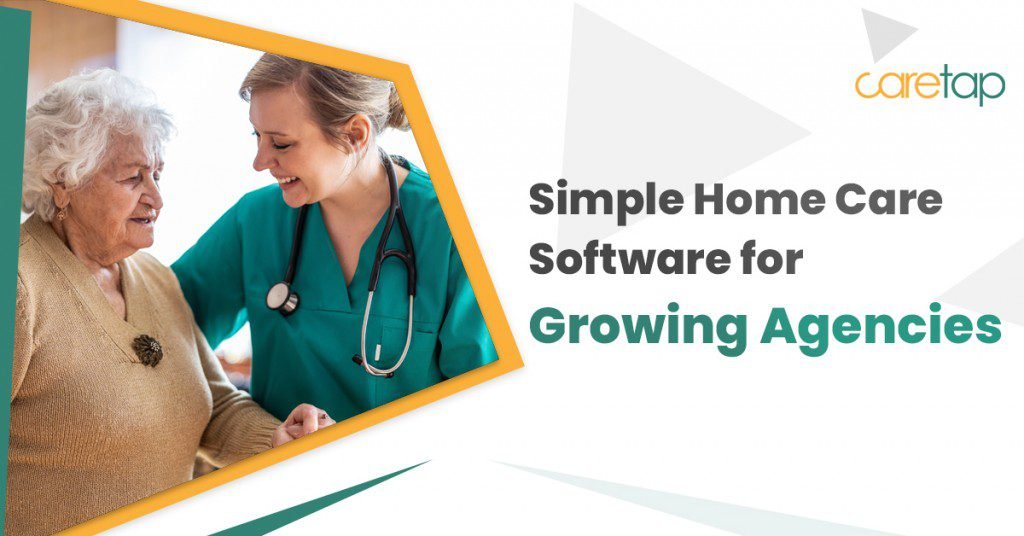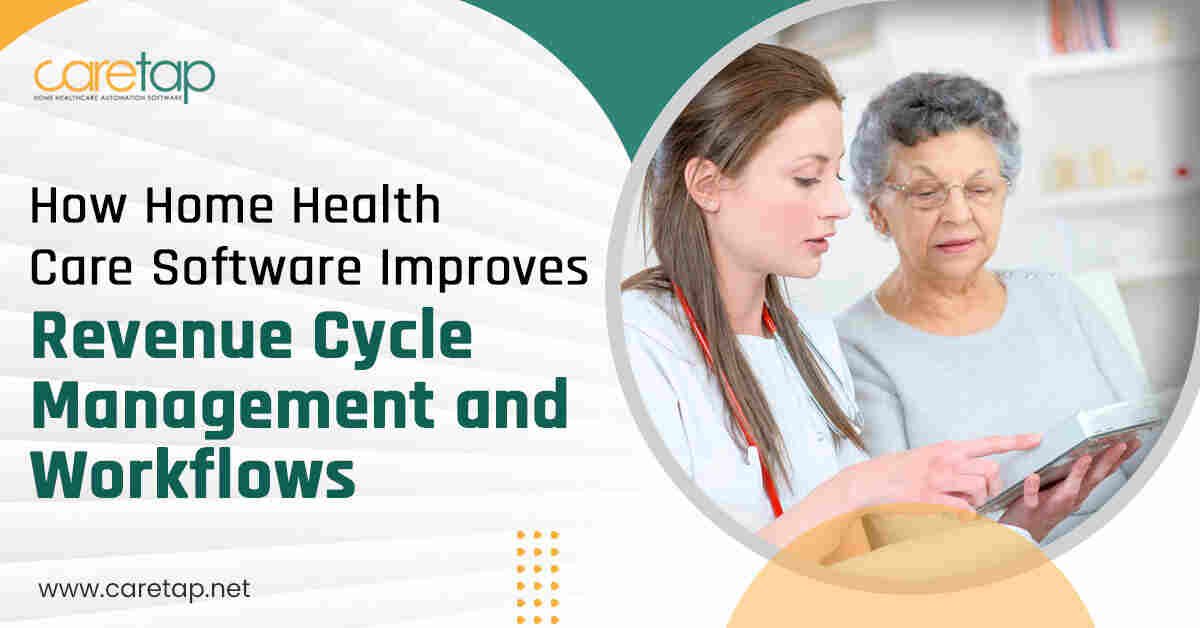Home health care agency management software is a powerful tool that revolutionizes the way home health care agencies operate, enabling them to deliver high-quality care while maximizing efficiency and patient satisfaction. This software provides a comprehensive suite of features designed to streamline administrative tasks, improve communication, and enhance overall agency performance.
By automating processes such as scheduling, billing, and record keeping, home health care agency management software frees up valuable time for caregivers to focus on providing personalized patient care. The software also fosters seamless communication between staff, patients, and their families, ensuring everyone is informed and involved in the care plan. Furthermore, the software’s reporting and analytics capabilities offer valuable insights into agency performance, allowing for data-driven decision-making and continuous improvement.
Implementing and Training for Home Health Care Agency Management Software

Successfully implementing home health care agency management software requires a well-defined plan that addresses all aspects of the process, from initial setup to ongoing support. This plan should consider the agency’s specific needs, workflows, and staff training requirements.
Software Implementation
Implementing home health care agency management software requires a systematic approach to ensure a smooth transition and maximize user adoption. This involves a series of steps, from initial planning to final testing and go-live.
- Define Scope and Requirements: Begin by clearly defining the agency’s specific needs and goals for the software. This involves identifying key areas for improvement, such as scheduling, billing, documentation, or communication.
- Select and Configure Software: Choose a software solution that aligns with the agency’s needs and budget. This may involve comparing different options, considering features, pricing, and vendor support. Once selected, configure the software to match the agency’s specific workflows and data structures.
- Data Migration: Transfer existing data from legacy systems or spreadsheets into the new software. This process should be carefully planned and executed to ensure data integrity and minimize disruptions to daily operations.
- User Training: Provide comprehensive training for all staff members who will be using the software. This should include hands-on sessions, interactive tutorials, and ongoing support resources.
- Pilot Testing: Conduct a pilot test with a small group of users to identify and address any issues before full implementation. This allows for early feedback and adjustments to ensure a successful rollout.
- Go-Live and Support: After successful pilot testing, implement the software across the agency. Provide ongoing support and assistance to users, addressing any questions or issues that arise.
Training Program for Staff Members
Developing a comprehensive training program for staff members is crucial for maximizing software utilization and ensuring its success. This program should be tailored to the agency’s specific needs and the software’s functionalities.
- Identify Training Needs: Assess the training needs of different staff roles, such as nurses, therapists, administrative staff, and billing specialists. This involves understanding their specific responsibilities and the software features they will use most frequently.
- Develop Training Materials: Create a variety of training materials, including user manuals, online tutorials, interactive simulations, and video demonstrations. These materials should be accessible, engaging, and tailored to different learning styles.
- Offer Hands-on Training: Conduct hands-on training sessions where staff members can practice using the software in a controlled environment. This allows them to gain practical experience and ask questions in real-time.
- Provide Ongoing Support: Establish a system for ongoing support, such as dedicated help desks, online forums, or email support. This ensures that staff members have access to assistance whenever they need it.
Strategies for Ensuring User Adoption
Maximizing software utilization requires a multi-faceted approach that addresses user concerns and encourages adoption.
- Emphasize Benefits: Clearly communicate the benefits of using the software, such as improved efficiency, reduced errors, and enhanced communication. Highlight how the software can make their daily tasks easier and more effective.
- Provide Incentives: Offer incentives for early adoption and ongoing use of the software. This could include recognition, rewards, or access to exclusive features.
- Encourage Feedback: Solicit regular feedback from users to identify any challenges or areas for improvement. This ensures that the software is meeting their needs and addressing their concerns.
- Make It User-Friendly: Ensure that the software is intuitive and easy to use. This involves providing clear instructions, helpful tooltips, and a user-friendly interface.
- Integrate with Existing Workflows: Integrate the software with existing workflows and systems to minimize disruption and maximize user adoption. This involves customizing the software to align with the agency’s specific processes and procedures.
Ongoing Support and Maintenance
Providing ongoing support and maintenance is crucial for ensuring the software’s long-term effectiveness and maximizing its value. This involves a combination of technical support, updates, and proactive maintenance.
- Technical Support: Offer technical support to users through phone, email, or online chat. This ensures that they can quickly resolve any issues and continue using the software effectively.
- Software Updates: Regularly update the software to address bugs, enhance features, and improve security. This ensures that the software remains functional, reliable, and compliant with industry standards.
- Proactive Maintenance: Perform proactive maintenance tasks, such as system backups, security scans, and performance monitoring. This helps to prevent issues and ensure the software’s stability and availability.
- User Training: Provide ongoing training to users as new features are added or updates are released. This keeps them informed about the latest functionalities and ensures they are using the software to its full potential.
Array
The home health care industry is undergoing a rapid transformation, driven by technological advancements, evolving patient needs, and a growing emphasis on value-based care. Home health care agency management software is at the forefront of this change, playing a critical role in streamlining operations, improving patient care, and enhancing efficiency. As technology continues to evolve, several key trends will shape the future of home health care agency management software.
Impact of Artificial Intelligence and Machine Learning
Artificial intelligence (AI) and machine learning (ML) are poised to revolutionize home health care agency management software. These technologies can analyze vast amounts of data to identify patterns, predict outcomes, and automate tasks.
- AI-powered chatbots can be used to provide patients with 24/7 support, answer frequently asked questions, and schedule appointments.
- ML algorithms can predict patient risk factors, identify potential complications, and recommend personalized care plans.
- AI can automate administrative tasks such as scheduling, billing, and documentation, freeing up staff to focus on patient care.
For example, a home health care agency could use AI to analyze patient data and identify individuals at high risk of readmission. The agency could then use this information to develop targeted interventions to prevent readmissions and improve patient outcomes.
Mobile Accessibility and Cloud-Based Solutions
The increasing use of mobile devices is transforming the way home health care agencies operate. Mobile-friendly software enables caregivers to access patient information, update care plans, and communicate with other team members from anywhere, anytime.
- Cloud-based solutions provide agencies with secure access to data from any device, eliminating the need for on-premises servers and software.
- Mobile apps can facilitate patient communication, allowing patients to schedule appointments, track their progress, and communicate with caregivers.
- Mobile accessibility empowers caregivers to deliver care more efficiently, reducing travel time and improving response times.
For instance, a caregiver can use a mobile app to access a patient’s medical history, medication list, and care plan while conducting a home visit. This allows the caregiver to provide more personalized and informed care.
Patient Engagement and Telehealth Integration
Patient engagement is essential for successful home health care. Home health care agency management software is evolving to support patient engagement by providing tools for patients to access their health information, communicate with caregivers, and participate in their care.
- Telehealth integration allows patients to receive remote care, such as virtual consultations and monitoring, reducing the need for in-person visits.
- Patient portals provide patients with access to their medical records, appointment schedules, and communication tools.
- Software can track patient progress and send reminders to patients about upcoming appointments and medications.
For example, a patient with chronic obstructive pulmonary disease (COPD) can use a telehealth platform to connect with their physician for virtual follow-up appointments, reducing the need for frequent trips to the clinic.
Data Analytics and Reporting, Home health care agency management software
Data analytics is becoming increasingly important for home health care agencies. Software can collect and analyze data on patient outcomes, operational efficiency, and financial performance. This data can be used to identify areas for improvement, optimize care delivery, and make informed business decisions.
- Software can track key performance indicators (KPIs), such as patient satisfaction, readmission rates, and length of stay.
- Data analytics can help agencies identify trends and patterns in patient care, leading to better care planning and outcomes.
- Reporting tools can provide agencies with insights into their financial performance, helping them to manage costs and optimize revenue.
For instance, a home health care agency could use data analytics to identify patients who are at risk of developing pressure ulcers. The agency could then implement targeted interventions to prevent pressure ulcers and improve patient safety.
In today’s dynamic healthcare landscape, home health care agencies need robust tools to navigate the complexities of patient care, administrative tasks, and regulatory compliance. Home health care agency management software emerges as a vital solution, empowering agencies to optimize operations, enhance patient experiences, and achieve sustainable growth. By leveraging the power of technology, these agencies can embrace a future where quality care and operational efficiency go hand in hand, ultimately transforming the lives of patients and their families.
FAQ Section: Home Health Care Agency Management Software
What are the key benefits of using home health care agency management software?
Home health care agency management software offers numerous benefits, including improved efficiency, enhanced patient care, increased revenue, reduced costs, better communication, and improved compliance.
How does home health care agency management software ensure HIPAA compliance?
HIPAA compliance is a crucial aspect of home health care agency management software. The software typically incorporates features like secure data storage, encrypted communication, and user access controls to safeguard patient information and meet HIPAA requirements.
What are some examples of home health care agency management software available in the market?
There are many reputable home health care agency management software solutions available, including Homecare Homebase, CareHarmony, and WellSky.
How can I choose the right home health care agency management software for my agency?
Choosing the right software involves considering factors such as agency size, budget, specific needs, and the software’s features and functionalities. It’s essential to research and compare different options before making a decision.